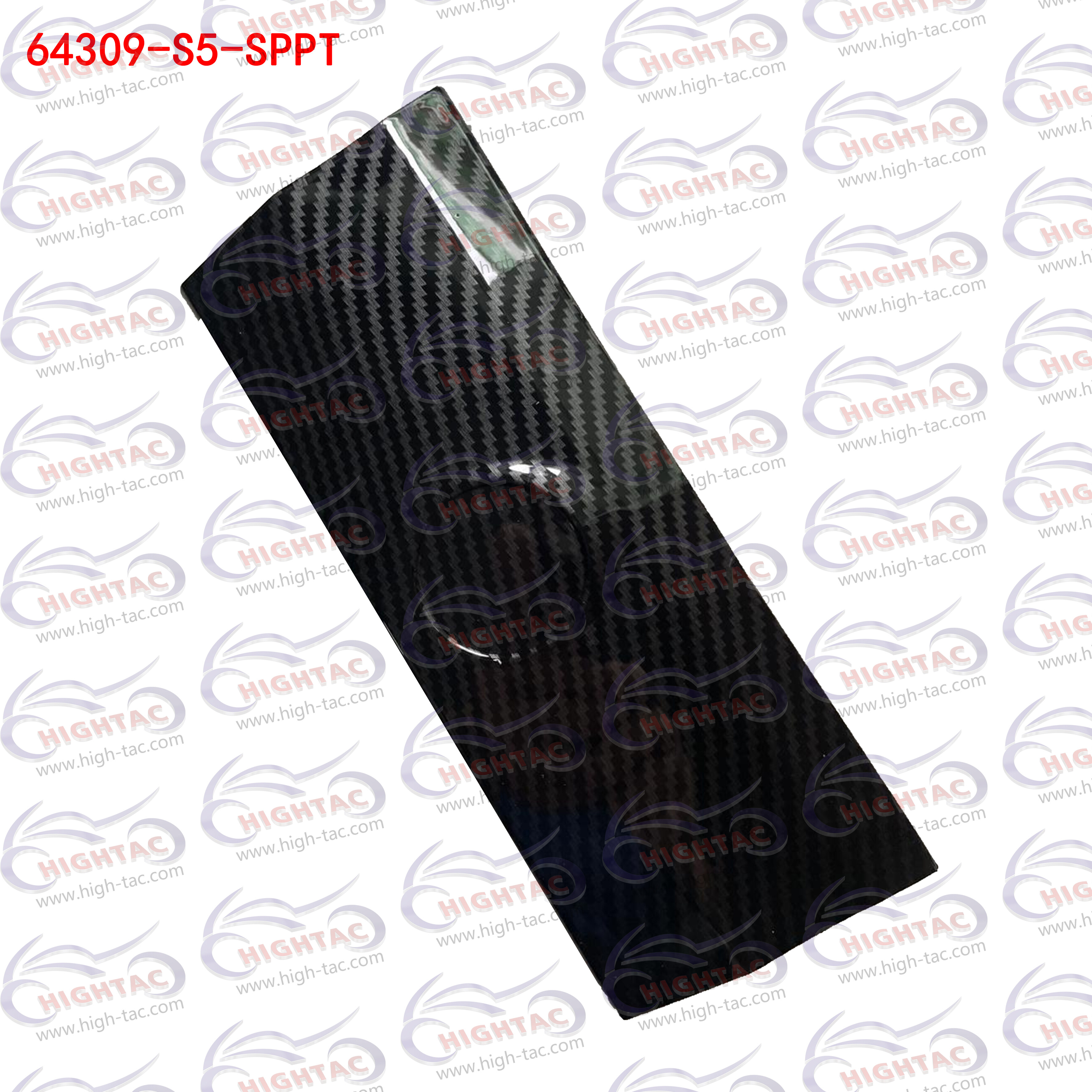How to Make Carbon Fiber Motorcycle Parts: A Step-by-Step Guide
In recent years, carbon fiber has gained significant popularity in the motorcycle industry due to its lightweight properties, exceptional strength, and sleek appearance. From custom body panels to intricate components, carbon fiber offers an edge to motorcycle enthusiasts who want high performance without compromising durability. This guide will take you through the detailed process of how to make carbon fiber motorcycle parts and offer insights on why this material is the go-to choice for riders and manufacturers alike.
Why Choose Carbon Fiber for Motorcycle Parts?
Before diving into the process of how to make carbon fiber motorcycle parts, it’s important to understand why carbon fiber is so popular. Carbon fiber boasts several key advantages over traditional materials like aluminum or steel, making it ideal for motorcycles.
1. Lightweight: One of the standout features of carbon fiber is its weight. Carbon fiber is significantly lighter than metal alternatives, reducing the overall weight of the motorcycle. This enhances performance, agility, and fuel efficiency.
2. Strength: Despite being lightweight, carbon fiber is incredibly strong and durable. It has a high tensile strength, meaning it can withstand heavy loads without cracking or deforming.
3. Aesthetic Appeal: Carbon fiber’s unique woven appearance is aesthetically pleasing. Many riders choose carbon fiber motorcycle parts not just for performance but for the sleek, high-tech look it provides.
4. Corrosion Resistance: Carbon fiber doesn’t rust like metals, which makes it perfect for long-lasting, durable motorcycle components exposed to the elements.
Now that you know why carbon fiber is a preferred material, let's move into the step-by-step process of making carbon fiber motorcycle parts.
Step 1: Preparing Your Workspace and Materials
When learning how to make carbon fiber motorcycle parts, preparation is key. Working with carbon fiber requires precision, cleanliness, and safety.
Tools and Materials Needed:
- Carbon fiber fabric (preferably 2x2 twill weave for motorcycle parts)
- Epoxy resin and hardener
- Mold release agent (for easy removal of the carbon fiber part from the mold)
- Mold (you can make your own mold or buy pre-made molds for motorcycle parts)
- Scissors and razor blades (for cutting the carbon fiber sheets)
- Vacuum bagging materials (vacuum pump, bagging film, and breather fabric)
- Sandpaper
- Safety equipment (gloves, mask, and protective clothing)
Before starting the process, ensure your workspace is clean and free from dust and contaminants. Contaminants can interfere with the resin's bonding properties, potentially ruining the carbon fiber part. You should also wear protective gear when working with carbon fiber, resin, and epoxy, as these materials can be harmful if inhaled or come into contact with the skin.
Step 2: Designing and Preparing the Mold
When it comes to how to make carbon fiber motorcycle parts, the mold is crucial. The mold will shape the carbon fiber to the exact form of the part you're creating. You can either buy a pre-made mold or create your own.
1. Creating a Custom Mold: If you're fabricating a custom part, you can create a mold using materials such as fiberglass, foam, or 3D-printed molds. Ensure that the mold is rigid and precisely shaped.
2. Applying Mold Release: Apply a mold release agent to the mold before laying down the carbon fiber. This will make it easier to remove the part once it’s cured, preventing damage.
Molds for carbon fiber motorcycle parts need to be perfect because carbon fiber doesn’t stretch or compress like plastic. Any imperfection in the mold will be reflected in the final product.
Step 3: Cutting and Laying the Carbon Fiber Fabric
Cutting and laying the carbon fiber fabric is one of the most meticulous steps in how to make carbon fiber motorcycle parts. The fabric must be cut precisely to fit the mold.
1. Cut the Carbon Fiber: Use sharp scissors or a razor blade to cut the carbon fiber fabric to the size and shape of the mold. Handle the material carefully to avoid fraying the edges.
2. Layering the Fabric: Carbon fiber motorcycle parts often require multiple layers for added strength. Lay the fabric inside the mold carefully, ensuring that each layer conforms perfectly to the mold's shape. The number of layers you use depends on the required strength of the part.
3. Resin Application: Once the fabric is laid in the mold, apply epoxy resin. The resin will bond the layers of fabric together and give the carbon fiber its characteristic stiffness. Use a roller or brush to evenly coat each layer with resin, ensuring no air bubbles are trapped between layers.
Step 4: Vacuum Bagging and Curing
Vacuum bagging is an essential step in ensuring that your carbon fiber motorcycle part cures properly, without any air pockets or imperfections. This is a critical technique when learning how to make carbon fiber motorcycle parts.
1. Bagging the Mold: After laying the carbon fiber and resin, seal the mold inside a vacuum bag. Ensure that the vacuum bag is airtight.
2. Vacuum Process: Connect a vacuum pump to the bag and turn it on. The vacuum will compress the carbon fiber layers and resin against the mold, ensuring a smooth and uniform finish. The vacuum also helps remove any excess resin or trapped air.
3. Curing: Allow the part to cure inside the vacuum bag for at least 24 hours (or as recommended by the resin manufacturer). The curing process allows the resin to harden and bond the carbon fiber layers together.
Step 5: Demolding and Finishing the Part
Once the carbon fiber has fully cured, it’s time to demold the part and apply the final touches.
1. Demolding the Part: Carefully remove the carbon fiber part from the mold. If you've used enough mold release agent, this should be straightforward. If not, proceed gently to avoid damaging the part.
2. Trimming Excess Material: Use a sharp razor blade or rotary tool to trim away any excess carbon fiber that extends beyond the mold.
3. Sanding and Polishing: After trimming, sand down any rough edges with fine-grit sandpaper. This gives the part a smooth finish. For an even more polished look, you can buff and polish the part to give it a glossy shine.
Step 6: Inspecting and Testing
Before installing the carbon fiber part on your motorcycle, inspect it thoroughly for any defects or weak points. Check for air bubbles, cracks, or uneven resin distribution. Testing the part under load conditions is also recommended to ensure that it meets the necessary strength and performance requirements.
Tips for Success in Carbon Fiber Fabrication
When learning how to make carbon fiber motorcycle parts, there are a few tips that can help ensure success:
1. Precision Is Key: Every step, from cutting the fabric to applying the resin, requires precision. Small mistakes can lead to weak spots or cosmetic issues in the final product.
2. Layering for Strength: Always consider the number of layers based on the intended use of the part. More layers increase strength but also add weight.
3. Practice on Small Parts First: If you’re new to working with carbon fiber, start with smaller, simpler parts before moving on to more complex designs. This allows you to perfect your technique before taking on larger projects.

Conclusion
Learning how to make carbon fiber motorcycle parts can be a rewarding process, offering both aesthetic and performance benefits to your bike. With the right tools, materials, and techniques, you can create lightweight, durable, and sleek carbon fiber components tailored to your specific needs. From body panels to custom parts, carbon fiber is a fantastic material for those looking to elevate their motorcycle’s performance and style. Just remember to follow each step carefully, pay attention to detail, and practice to perfect your skills in carbon fiber fabrication.



